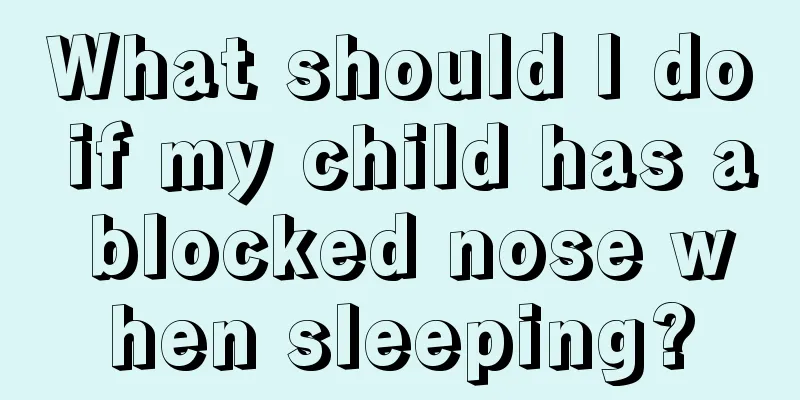Can the baby be rocked? The correct approach is this

|
When a baby cries, many adults will hold the baby and rock him/her. This can stop the baby from crying and help the baby fall asleep. However, experts say that this approach must be done with caution and the shaking force should not be too strong, otherwise it may harm the baby's body. 1. Can a baby be held and rocked? It is best not to shake the baby, which is unscientific. When the baby is crying or has trouble sleeping, some young mothers will hold the baby in their arms or put the baby in a cradle and rock him. The harder the baby cries, the harder the mother will shake the baby until the baby falls asleep. Little do people know that this practice is very harmful to the baby, because the shaking action causes the baby's brain to swing constantly in the skull cavity. The immature brain will collide with the harder skull, causing small blood vessels in the brain to rupture, causing "mild concussion syndrome", concussion and intracranial hemorrhage. In mild cases, epilepsy, mental retardation, and limb paralysis may occur; in severe cases, cerebral edema, brain herniation, and death may occur. 2. Currently, clinical cases mostly occur in infants or young children aged 0-4 years old, but the main victims are infants aged 0-8 months. Because under normal circumstances, the volume and weight of a baby's head account for a much larger proportion of the body than those of an adult. The length of a baby's head accounts for 20% of the body, while that of an adult is about 10%. In addition, the baby's brain development is still not stable, the neck muscles are weak, the ligaments are less elastic, and the cervical vertebrae are not fully ossified, making it difficult for them to withstand large-scale shaking and high-throw shocks. If you keep shaking a baby, or throw the baby up and catch him/her again and again, the brain tissue inside the baby's head will easily collide with the harder skull due to the shaking or high throwing, thus causing brain damage. 3. Since clinical symptoms are closely related to the number and degree of shaking, a severe shaking can cause shaking syndrome. Even if the shaking action is not violent, it can easily cause the baby to develop this symptom if it is performed repeatedly over a long period of time. Babies with shaken syndrome may initially be drowsy, have a poor appetite or be irritable, followed by convulsions or unconsciousness. Convulsions may be occasional or localized, but they may also occur frequently, and in severe cases may even cause coma or death. Sometimes, even if the life is saved, there will be serious neurological sequelae. 4. The baby's neck is soft and fragile, the head is heavy, and the base of the baby's skull is relatively flat, making it difficult to fix the brain and the neck lacks support. If the baby is shaken or turned violently by adults, the blood vessels connecting the surface of the brain to the veins under the skull will also shake, which may cause damage to the brain nerves. In severe cases, the baby's brain, cervical spine, etc. may be damaged, leading to irreparable harm. This is the so-called shaken baby syndrome (SBS). |
<<: What can’t babies eat when they have internal heat? This knowledge must be remembered
>>: Can babies use pillows? Experts tell you the right way
Recommend
How to quickly eliminate flatulence in children
In daily life, whether adults or children, bloati...
Symptoms of autism in children
Autism in children usually occurs in infancy, and...
Causes of black teeth in children
Everyone knows that teeth are very important to u...
What should I do if my child is lazy and not active?
Parents all hope that their children can succeed,...
Symptoms of baby thrush
Parents with Dingbao at home should pay more atte...
Prevention and care of baby's cough, sneezing and runny nose
In fact, babies have relatively low immunity, so ...
What kind of milk can help children grow taller?
The key to whether a child can grow taller lies i...
Newborn abdominal massage preparation
Care for newborns must be comprehensive. Many mot...
Causes of cerebral palsy in children
We also call cerebral palsy in children cerebral ...
What are the symptoms of spleen and stomach disharmony in children?
After a child is born, until the age of three, hi...
Nine abilities that influence children's lives
1. The ability to accept failure is the bridge to...
How to treat infants with congenital hypothyroidism
Congenital hypothyroidism is a very common diseas...
How to treat a child with a viral cold
There are many types of colds, some are viral, an...
What is childhood asthma
What is childhood asthma? I believe it is very ne...
What to do if the redness and swelling after vaccination
We all know that babies will go to the hospital t...









